Bill Nye, the Science Guy!
By Hillel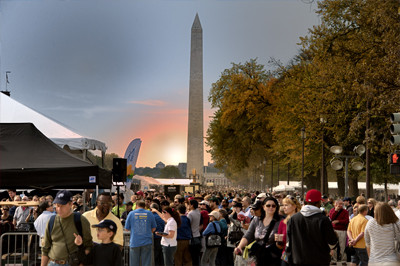
I’ve always loved science. From an early age, my father fostered this interest by exposing me to many of the branches of science through a variety of activities, experiments, and mini-lectures. Though he didn’t have the same knack as Bill Nye, Neil deGrasse Tyson, and Stephen Hawking for distilling complex theories into digestible concepts, he did continuously spark my interest in the sciences. Throughout my childhood, my father exhibited frequent bouts of scientific curiosity, and was always steadfast in his confidence in the scientific method. Without explicitly spelling it out, he made it clear that it was not faith, but this singular method that can be trusted to make sense of the world around us – and for the most part, already has for me.
At an early age, my father and I put together a large mirror-based telescope with an electric motor to track the stars, and he taught me how to align the base of it towards the North Star for proper tracking. We manually located various celestial objects including the moon, various planets, and even some popular star clusters. By observation, it was clear that there was a huge disparity in distance between the near planets and the almost unimaginable distant stars. Both planets and stars looked about the same size with out eyes, but in the telescope, planets grew, but stars remained mere pinpoints of light. Space was obviously grand on a scale almost unimaginable to me. I learned the difference between solar and lunar eclipses in February of 1979 during a rare total solar eclipse when my dad took us out on the back patio to witness it. Though I wasn’t allowed to look at it directly, just the fact that this event could be predicted by astronomical study made an impact on me. Though his information wasn’t always reliable, his enthusiasm was guaranteed as he fielded many of my questions about the sky and beyond. Later I would take an introduction Astronomy course at the University of Maryland and fill in many of the missing gaps that I had either failed to ask or understand.
My father’s appetite for science was sometimes overshadowed by his love of stamp collecting. This was stated clearly on our cars, which bore the “I’d Rather Be Collecting Stamps” bumper stickers. He had many tools he used in his hobby, including a UV light, which he used to observe special watermarks. He also had an assortment of magnifying glasses. At one point, he gave me a rather large one magnify things outside. He did not mention anything about light’s composition or constant speed, but he did make it clear that light could be bent by lenses and used to magnify our world just like in the telescope. I proceeded outside to study small ants and such. It was winter, and our special Zoysia grass was brown and dry. After only a few minutes, the sun lined up with my view and the grass lit up. Though my father calmly put out the smoldering grass soon after, it was painfully obvious to me that lenses could be also used to focus light.
He brought toys home constantly demonstrating various scientific effects. One of my earliest toy memories was that of a gyroscope you could set in motion by pulling a string. He also revealed a toy bird filled with red alcohol which would lower and raise from a glass of water due to evaporation and alcohol expansion. He showed off a glass object with four pieces of paper in it, which would spin endlessly in the sun because their black sides heated up faster than their white sides. Slinkies descended the stairs in the morning, and toy helicopters rose off the living room floor on many evenings.
My grandfather was doctor, and when he died, my parents went to New York to collect some of his things and bring them home. One of the things my father brought back was a large black wooden box. The box contained a high powered microscope with plenty of lenses, slides, and glass covers. My father started by showing us our own hair, but we spent a lot of time gathering ants, grass, and even fleas or lice to magnify. I was amazed how much more detail could be seen in such plain objects. The magnifying glass was cool, but the microscope offered views of a whole world nearly invisible to our naked eye. Though I could not see germs with this simple microscope, pictures of microbes in books no longer seemed mythical because I already knew there was more to everything than meets the eye.
Later on, our family fell in love with rabbits when we were offered one for free from the man who built our backyard patio. I helped my father build a hutch for them, and data created a water dispenser from a two liter water bottle. We made many trips to Gaithersburg to buy bales of hay for them to eat and nest in. I participated in their care under his supervision for years. In time, we learned the intimate details of these creatures by observing them as they went through their entire life cycle. I still look at rabbits to this day with an understanding of many of their intrinsic behaviors I’ve directly observed with my siblings. Today, I am part of a cat-loving family, and these creatures too have their own complexity that is not apparent without closer inspection. From this, I know that all of nature’s living creatures offer more than what you see on their surface. For some living creatures, I can learn about them using a microscope. For others I can view them in museums, aquariums, and zoos. But, most of what we know about life is already well discovered by the biology and behavior sciences, and documented in countless books that I can read or research any time I want.
On our trips to New York, Canal Street was always a favorite stop for my Dad. It looks quite different today, but back then, many of the shops simply had endless boxes of cheap electronic parts that you could use in your own projects. I remember him getting me two very powerful magnets to play with which pushed my notion of just how powerful magnetic fields could be – even if invisible to the eye. He also bought me a set of miniature power tools and some foam for me to practice drilling and cutting. Just seeing the boxes of transformers, capacitors, transistors, resistors, and wires was enough for me to get a sense of how science had already brought tremendous discovery and interest to the field of electronics.
One day, he presented my siblings and I with a chemistry set. Though I couldn’t pronounce the names of the chemicals and I didn’t have the patience to run through the booklet that came with it, I do remember conducting a few of the experiments with my siblings to make invisible ink, color changing liquids, and various bubbling substances. Though I didn’t have the same interest in chemistry, I did appreciate and learn the relevance of weights, volumes, interactions, ratios, acidity, and stepwise progression. Later he would introduce us to frozen carbon dioxide, or dry ice. He would take some out to a lake we fished in, and we would watch it sublimate from solid to foggy gas instantly on the rippling water. Later, on the 4th of July, he would mix homemade fireworks using sugar and sulfuric acid in a beaker on our back patio for a short but fiery show.
At some point he came home with an electronic radio kit. At the time, consumer radio headsets were not readily available, and the idea that I could listen on an earphone with a cheap tiny circuit intrigued me. Though my father could not easily explain how such a device could work without a battery (I understand why now), the radio was indeed small and portable and held my attention through many nights while I scanned accessible AM stations in private. It was hard for me to imagine signals which were invisible to the eye but not to the receiver. Dad also created a Morse Code transmission system with a ringer so I could communicate directly with my sister in the next room – he gave each of us a “cheat-sheet” with the codes to help us tap out messages. Eventually he provided us with larger walkie-talkies, and finally, we were encouraged to use the CB radio to talk with distant drivers on our long trips out west. Other electronic projects were conducted with his help, and we used soldering irons often. I still remember his zinc-penny battery experiment, which was conducted on the dining room table and my amazement when the voltmeter moved without a traditional battery in sight. I didn’t understand the experiment, but I understood then that several different branches of science are integrally connected. Electrical engineering and chemistry aren’t two separate studies, so much as observations of our world from different perspectives.
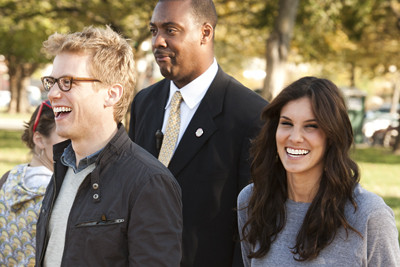
My father believed strongly in visiting as many national parks as is possible in the three weeks leading up to school at the end of each summer. On these long trips, we saw many natural and wondrous places. We saw the New England tide pools near the Bay of Fundi. We saw the geysers and hot pools in Yellowstone, hiked to glaciers in Canada, walked the canyon valleys of Bryce, enjoyed the vista at Mount Rushmore, leaned on Sequoia Redwoods in Kings Canyon, rode down Smokey Mountain streams in tubes, and located the triple continental divide. We watched our car roll up the “magnetic hills” without power, collected shells on both coasts, approached Niagara Falls from below, and were well acquainted with the flat plain states and their vast fields of wheat we noted on our way home. We explored the Mammoth and Jewel caves with their stalactites and stalagmites. We hiked up mountains, canoed various lakes in the US and Canada, and built our tents and campfires in nearly every state. We saw Mt. Baker from Seattle. We stood at the intersection of four states. We stopped by the “House of Corn”, and found Wall Drug after 1000+ miles of road signs. We saw the devastation around the now dormant volcano in Mount St. Helens National Park, and pulled off the road to inspect the pumice, which wasn’t there just a few years prior. We collected many geodes, and had some of them cut for display in our living room. In California, for no apparent reason, my father pulled off the road and put rocks with white insides into large plastic bags. When we got home, he placed pieces of these rocks under the microscope and we were shocked to find a nearly infinite number of fossil remains from the diatomaceous earth. These experiences connected my previous understanding of small living creatures with my new appreciation of the large and timeless events of geology and nature that were apparent from our many trips out west.
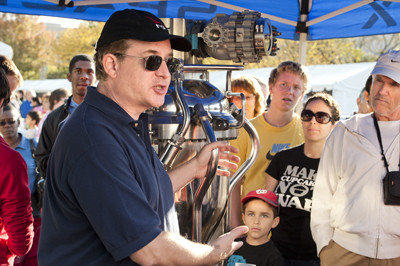
During the year we were given kits and built foam and gas powered planes. The foam plane was launched from a large hill at a school near our house. The gas-powered plane was flown in the field at the hill’s base. On windy days, kites were sometimes flown, and an electric power drill was used in reverse to reel it in on lazy days. At my fathers work, they often discarded old radiosondes. One day he brought home both a large balloon and various white boxes. The white boxes had various measuring devices inside, and my father explained that these were once carried high up into the sky to gather data for research at his work. He used a vacuum cleaner in reverse to blow up the balloon, and we had a lot of fun that day with it. Eventually I took apart the electronic parts from radiosonde devices with my soldering iron and had a good look at them. I saw the barometer device which was easy to identify with its flying saucer-like expandable disc. I understood that the fields of electrical engineering and aerospace weren’t separate, but instead complimentary. Scientific understanding in one field is usually connected and relevant to other fields of study in the same way that different aspects of nature are connected and complimentary.
Ever since I can remember, my father owned cameras, and he took them everywhere. He gave me an inexpensive camera to play with on our trips out west. I learned a lot about optics and light with the camera. Though my camera was a simple device, it was completely manual, which forced me to understand how to configure it for each shot’s distance and lighting. My father taught me how to load and unload the film. He explained briefly the importance of choosing the right ISO film. I understood from his simple description, how light could be directed by the glass to react with the chemicals on the film. The raw film represented the negative footprint of what could be seen in the visible spectrum we see, and a positive print could be made later using a process involving optics and chemical solutions at various temperatures. We explored this process together by developing several black and white negatives in our downstairs bathroom. Mostly, we were lazy and delivered our film directly to the Kodak lab near our house, which is no longer around now that we are in the digital age. From these experiences I understood that the science of optics, chemistry, and electronics can be connected to facilitate the development of amazing devices that today have revolutionized and the recording of modern history.

When I was a bit older, my father used to take me to work sometimes and let me type on their large keypunch machines. I did not know what FORTRAN was at the time, and my father did not explain the purpose behind the “bits” that I was punching out of the tiny cards. It was just fun to type on a big old machine that obviously held some great importance. Then, for Hanukkah one year, my father presented us with a do-it-yourself electronic computer. It was basically a cheap plastic box with lots of holes for wires and sliders in columns. At the back end of the device were lights for each slider column. The booklet that came with it helped us to construct a variety games by describing how to wire up the board. Each game usually consisted of the sliders being moved, and several of the lights would then turn on to reveal the next step in the game or an answer. It was fun, but the logic behind it was a mystery to me. Several years later, though, he came home with a $600 TRS-80 Model I computer which I took to immediately. This device wasn’t anything like the previous toy. From the first chapter in the BASIC manual, which my mother helped me through, I immediately saw its potential. I raced through the remaining chapters on my own which concluded with a cannon-firing physics simulation game (Fire When Ready Gridley!) program. It was my first exposure to the intersection between computer science and another science, physics. As time went on, my dad eventually introduced me to a computer club and encouraged me to make a presentation during one of their meetings, which he would tag along. He bought endless additions for me to this simple computer including a lowercase module, double density drives, a 300-baud modem, a memory expansion board, and even a speech synthesizer. It wasn’t long before I got a computer job teaching at summer camp, and was soon employed by a large high-tech company before completing my undergraduate degree in Computer Science. I owe both my father and mother for exposing me to this new technology at its infancy, and allowing me to get in on the ground floor. But mostly I have boundless gratitude for my father who trusted that this expensive purchase was worth every penny in what it could teach his children about their future.
Throughout my undergraduate and graduate college years, I was repeatedly exposed to various sciences. I took an introduction classes to physics, electrical engineering, and astronomy. I minored in math, and majored in the Computer Sciences for both degrees. I took opportunities to watch the stars at the University’s satellite astronomy facility. I taught myself to play the electric guitar, and learned how it worked, and made modifications to it with my trusty soldering iron. I worked in conjunction with several meteorology department teachers in conjunction with the San Diego supercomputer to analyze their data, and display graphical outputs from newly developed weather models. I was also a first-aider in the computer labs, and assisted teachers in a variety of computer seminars at the Shady Grove campus. My thesis was in Computer Science, but its goal was to devise a way for Aerospace employees working throughout NASA to access their space derived data remotely using familiar tools with limited bandwidth. Again, science fields frequently overlap.
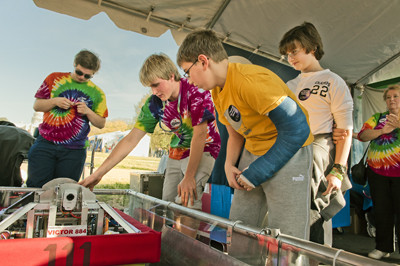
Since college, I have continued my interest in the sciences and encouraged my children to learn and appreciate the scientific method. I impress upon them the importance of the discovery and validity of evolution. I encourage them to follow today’s scientific achievements such as the rocket launches and the Mars rover landings. I often build and launch rockets with them. I let them play with RC cars that I have modified with mounted wireless cameras. I have designed and built 3D video cameras, and showed my kids the results with the red/cyan glasses. I built a robotic panorama capture systems, and showed them the composite that I stitched on the computer. I have read a variety of works from both Brian Greene and Stephen Hawking, and often discuss their ideas in simple terms with my kids. I am most of the way through Einsteins biography, and I hope to finish it soon.
In October 2010, I became aware that the Science and Engineering Festival was going to have its grand finale on the 23rd and 24th of the month at various locations in and around DC. I didn’t think I would be able to make it, and as such, I didn’t mention it to my kids. But, a friend of mine said they were going, and asked if they could take my son to keep her son company. I finally decided to research the festival, and realized that it was a unique opportunity to encourage my kids to further embrace the excitement of discovery that only science can deliver. I decided to take my son on my own, and meet them downtown on the 23rd. When we got there, we quickly met up with our friends and proceeded to make the rounds. Soon the kids were engrossed in a variety of hands-on science booths. I came across the SpaceX booth and learned a bit about the new engines they have been working on. Later, we all had a chance to see several actors and screenwriters from the NCIS and CSI shows. A magician also performed a variety of acts which demonstrated various aspects of science ranging from chemistry to physics. By the end of the day, we were all sure it was a day well spent.
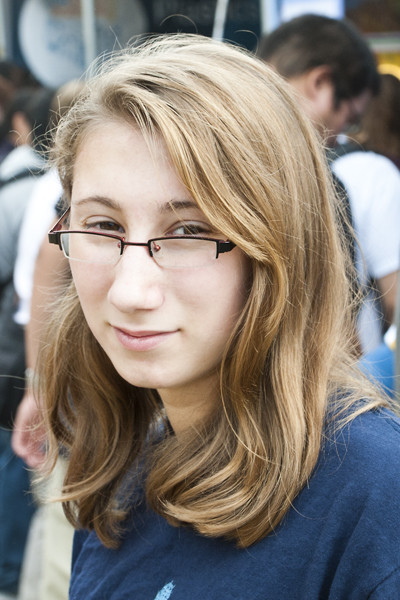
The next day, I was looking through the event listing that I had picked up from the day before and noticed that Bill Nye was going to speak at the end of the day on the 24th. On a lark, I asked my daughter if she would like to go now that most of her homework was completed. She agreed, and my son decided to join me again for another round of science exploration. At the last minute, my wife decided to join in on the action to see what she had missed on the previous day. We all headed out to the national mall after lunch. Once again, the kids were immediately engrossed in the different activities at each booth. They made catapults to explore physics. They learned about recycling and ball throwing robots. Towards the end of the day, we decided to locate where Bill Nye was going to speak. It turns out he scheduled to appear at a lecture hall in the basement of the Natural History museum. We decided to get there early, but had to wait outside while they prepared the room. Our whole family knows Mr. Nye from his TV show, as well as his appearances in the news (e.g., the oil spill coverage). His enthusiasm for science is widely known, and kids from around the world have responded to his genuine curiosity for scientific exploration and discovery. The purpose of this evening’s appearance was to introduce and present awards for various science videos created by kids. Or, looking at the big picture, this was an opportunity to appreciate other people just like Bill Nye.
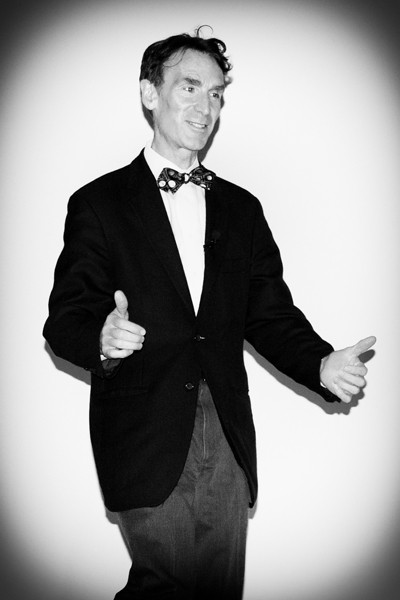
When we were finally allowed to sit, our family made our way to the front and center of the auditorium for the best viewing. I took out my 70mm-200mm and tested it with the on-flash in several configurations until I was happy with the lighting and white balance. Eventually the lights dimmed, and his musical intro was heard. When the lights came on, he magically appeared and casually strode across the stage to the podium. He had on his usual attire, his signature bow tie, as well as his trusty black suite. The audience erupted into a crescendo of cheer and applause, and he responded by raising both thumbs upwards to match the crowds enthusiasm. I managed to capture this special moment and you can easily see his genuine smile as he began to do what he does best, sell science.
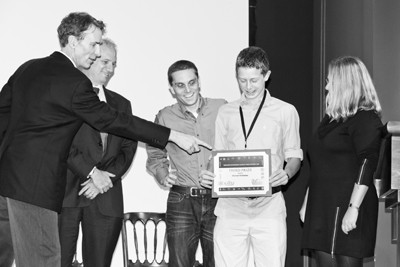
The details of his talk are not important. What should be noted is the enthusiasm by which this aging celebrity delivered each topic. Whether it was a martian sun dial or the unique perspective of the view of the Earth from the moon, Bill spoke as if these were the coolest things since the wheel. I looked around the audience, and noted his broad appeal to folks of all ages. While the kids on stage and in the audience were continuously engaged, reacting immediately to his captivating hand and vocal gestures, the parents were in rapture too, and for a moment kids themselves. These still pictures do not do Bill justice. One day, if you haven’t seen him “live”, you should put it on your “bucket” list before it’s too late. Until then, there are plenty of videos of him on cable, Netflix, and YouTube to choose from.
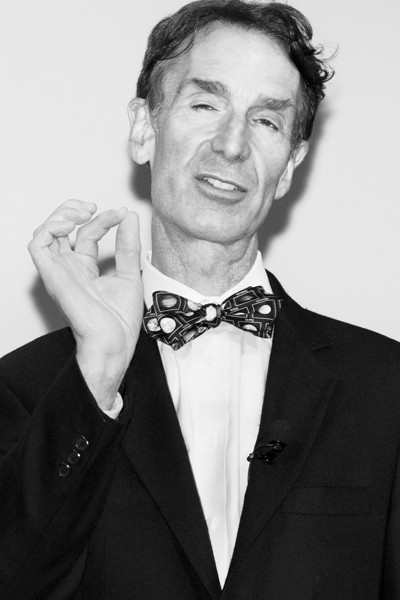
[whohit]-BILLNYE-[/whohit]
Science never gets old. Science is the study of our universe – it is a methodology of experimentally assessing testable theories. We rely on it constantly each day, from the time we wake up and drink homogenized milk, to the time we set our digital alarm clocks before going to bed. It is the reason today we can see the distant as well as the small. It is how we fly, heal the sick, control a rover on another planet, and light the night. It is how we will know when we are endangering the planet, and what steps we can do to prevent it. It is, most importantly, how we know “how”. You don’t need someone to get you excited about science. But, today, if ever you should doubt science’s contribution to our lives, Bill would surely remind you that your computer, the electricity it uses, the Internet, this Blog you are reading, and my camera that took the pictures above would simply never have been possible without it. But, because I grew up in an age before the influences of heroes like Bill and Neil, I needed someone in their place at an early age to foster the same appetite for science and its method. My father was more than a nuclear physicist; he was my childhood Bill Nye – always curious and willing to share his enthusiasm for nature and science with me without “selling” it. Though he recently passed away, I will always owe my father for my strong sense of curiosity and my insatiable desire for scientific discovery over unquestioning faith. For this I am forever in his debt.
In the past several years I’ve been to the Global Citizen Earth Day festival in 2015, the 2016 Reason Rally in DC, and this year’s Science March downtown. I think of my dad often while at these events. In 2014, I enrolled my kids at in three day science extravaganza in DC called the “The Future is Here” where they got to see in person George Takei, Patrick Stewart, Brian Greene, Kari Byron from Mythbusters, astronaut Mae Jemison, and watch a man fly around the Ronald Reagan Building in a jetpack. It has been my hope that my kids will share at least in some part, the passion for science and reason that I have learned through childhood experiences with my dad. Thanks Dad!
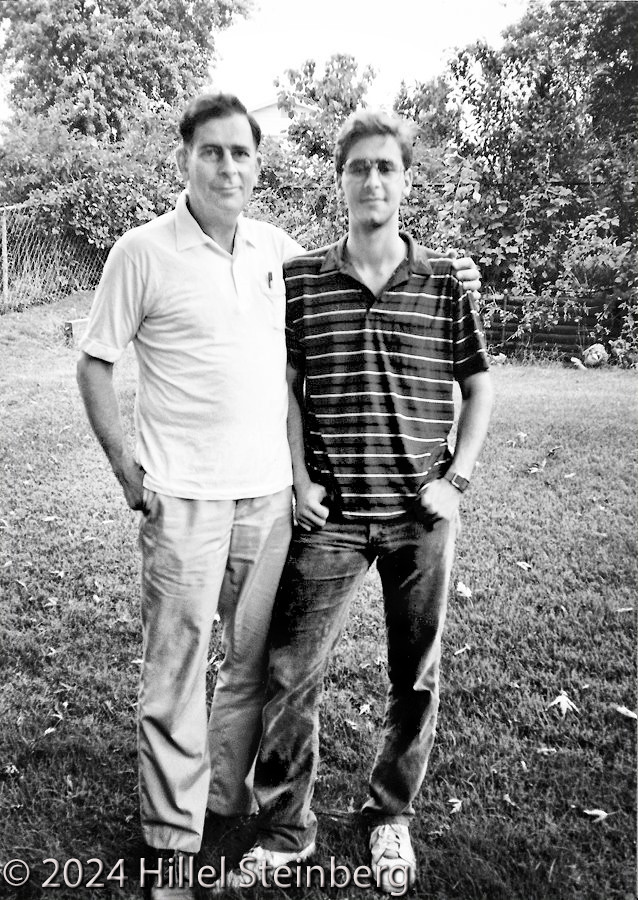
[whohit]-BILLNYE-[/whohit]

Post a Comment
You must be logged in to post a comment.